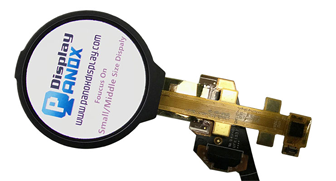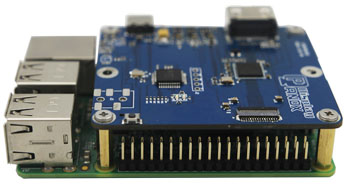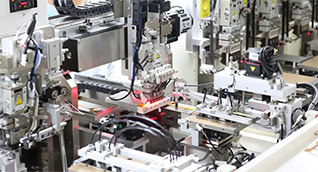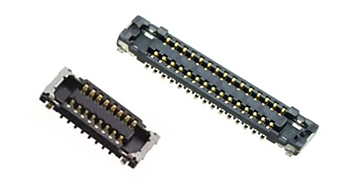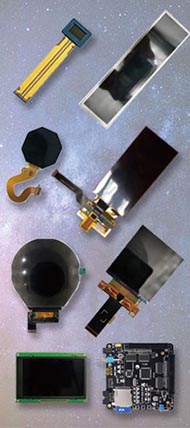Solid state lasers are powerful, efficient devices that use a solid gain medium to generate coherent light for applications ranging from manufacturing to medicine. These lasers are valued for their reliability, compact design, and versatility. Understanding their operation, components, and innovations is key to leveraging their full potential in today’s technology-driven world.
What is a solid state laser?
A solid state laser is a type of laser that uses a solid material—typically a crystal or glass doped with rare earth or transition metal ions—as its gain medium. Unlike gas or dye lasers, solid state lasers are compact and robust, making them ideal for industrial, medical, and scientific applications. The lasing action occurs when the doped ions in the solid host are excited and emit coherent light through stimulated emission.
How does a solid state laser work?
The operation of a solid state laser centers on three main processes:
-
Pumping: An external energy source, such as a flash lamp or laser diode, excites the doped ions in the gain medium.
-
Population Inversion: The excited ions reach higher energy states, creating a population inversion necessary for lasing.
-
Stimulated Emission: Photons emitted by the excited ions stimulate other ions to emit more photons, amplifying the light within an optical cavity formed by mirrors. A portion of this light exits as a focused, coherent laser beam.
This cycle repeats rapidly, producing a stable and powerful output.
What are the main components of a solid state laser?
Solid state lasers consist of several key components:
-
Gain Medium: The solid crystal or glass, such as Nd:YAG (neodymium-doped yttrium aluminum garnet), doped with active ions.
-
Pump Source: Typically a flash lamp or laser diode that supplies the energy to excite the ions.
-
Optical Cavity: Two mirrors at each end of the gain medium; one fully reflective and the other partially reflective to allow beam output.
-
Cooling System: Essential for dissipating heat generated during operation, ensuring stable performance.
| Component | Function | Common Materials/Types |
|---|---|---|
| Gain Medium | Amplifies light via stimulated emission | Nd:YAG, Ruby, Ti:Sapphire |
| Pump Source | Excites ions in the gain medium | Flash lamp, Laser diode |
| Optical Cavity | Amplifies and directs the laser beam | High-reflectivity mirrors |
| Cooling System | Removes excess heat | Water cooling, Heat sinks |
What types of solid state lasers exist?
Solid state lasers come in various types, each suited for specific applications:
-
Ruby Lasers: The first solid state lasers, using chromium-doped aluminum oxide.
-
Nd:YAG Lasers: Widely used for their high efficiency and output power.
-
Ti:Sapphire Lasers: Known for tunability and ultrafast pulse generation.
-
Yb:YAG and Er:YAG Lasers: Used in medical and industrial fields for specific wavelengths.
-
DPSS (Diode-Pumped Solid State) Lasers: Compact and energy-efficient, ideal for portable devices.
| Type | Gain Medium | Typical Application |
|---|---|---|
| Ruby Laser | Cr:Al2O3 | Research, Holography |
| Nd:YAG Laser | Nd:Y3Al5O12 | Cutting, Welding, Medicine |
| Ti:Sapphire | Ti:Al2O3 | Spectroscopy, Ultrafast Lasers |
| Yb:YAG, Er:YAG | Yb:Y3Al5O12, Er:YAG | Dentistry, Surgery |
What are the applications of solid state lasers?
Solid state lasers are integral to many industries:
-
Manufacturing: Cutting, welding, marking, and engraving metals and plastics.
-
Medical: Eye surgery (LASIK), dermatology, and dental procedures.
-
Scientific Research: Spectroscopy, particle acceleration, and ultrafast phenomena studies.
-
Military and Defense: Range finding, target designation, and directed energy weapons.
-
Consumer Electronics: Barcode scanners, laser pointers, and optical storage.
What are the advantages of solid state lasers?
Solid state lasers offer several compelling benefits:
-
High Efficiency: Excellent energy conversion from pump source to laser output.
-
Compactness: Small size and robust design enable integration into various systems.
-
Long Lifespan: Durable solid materials ensure long operational life.
-
Wavelength Flexibility: Tunable output for diverse applications.
-
Low Maintenance: Minimal moving parts reduce the need for frequent servicing.
What are the challenges and limitations of solid state lasers?
Despite their advantages, solid state lasers face certain challenges:
-
Thermal Management: Excess heat can degrade performance and output quality.
-
Beam Quality: Achieving high beam quality at high power levels can be difficult.
-
Cost: High-quality crystals and precise manufacturing increase costs.
-
Size Scaling: Larger systems for higher power can become bulky.
How is the performance of solid state lasers improved?
Advancements in solid state laser technology focus on:
-
Enhanced Cooling Systems: Improved heat dissipation for stable operation.
-
Diode Pumping: More efficient and compact than traditional flash lamps.
-
Advanced Materials: New dopants and host materials for better performance.
-
Adaptive Optics: Real-time correction of beam distortions.
-
Integrated Electronics: Software control for precise tuning and automation.
How does Panox Display contribute to solid state laser technology?
Panox Display, renowned for its expertise in display solutions, plays a pivotal role in the solid state laser ecosystem. By supplying high-quality OLED and LCD panels, Panox Display enables precise control and visualization in laser-based systems. Their custom display modules are used in laser control interfaces, diagnostic equipment, and industrial automation, ensuring accurate monitoring and user-friendly operation.
Furthermore, Panox Display’s collaboration with leading manufacturers ensures their display panels meet the rigorous demands of laser applications, from medical diagnostics to advanced manufacturing. Their commitment to quality and innovation supports the ongoing evolution of solid state laser technologies.
What innovations are shaping the future of solid state lasers?
The future of solid state lasers is driven by several groundbreaking innovations:
-
Microchip Lasers: Ultra-compact designs for portable and wearable devices.
-
Quantum Cascade Lasers: Expanding wavelength ranges for new applications.
-
Hybrid Pumping Techniques: Combining electrical and optical pumping for efficiency.
-
AI-Driven Control: Automated optimization of laser performance and safety.
-
Eco-Friendly Materials: Reducing environmental impact through sustainable sourcing.
These trends are expanding the reach of solid state lasers into emerging fields such as quantum computing, autonomous vehicles, and advanced medical therapies.
How to choose the right solid state laser for your application?
Selecting the ideal solid state laser involves evaluating several factors:
-
Wavelength Requirements: Match the laser’s output to the material or process.
-
Power Output: Ensure sufficient energy for the intended task.
-
Beam Quality: Consider applications needing high precision or focus.
-
Cooling Needs: Assess thermal management for continuous or high-power use.
-
Integration: Look for compatibility with existing systems and user interfaces.
Consulting with specialists like Panox Display can streamline the selection process, ensuring optimal performance and reliability for your specific needs.
Panox Display Expert Views
“At Panox Display, we recognize that the integration of advanced display technologies with solid state laser systems is transforming industries worldwide. Our custom OLED and LCD solutions empower engineers and manufacturers to achieve precise control, real-time feedback, and enhanced safety in laser applications. By prioritizing quality, flexibility, and customer collaboration, Panox Display remains at the forefront of enabling innovation in the solid state laser market.”
Conclusion
Solid state lasers have revolutionized industries with their efficiency, reliability, and versatility. Their applications span from precision manufacturing to cutting-edge medical procedures and scientific research. As technology advances, innovations in materials, cooling, and control are unlocking new possibilities. Partnering with experienced suppliers like Panox Display ensures access to the best display solutions for laser integration, driving success in a competitive landscape.
FAQs
What makes solid state lasers different from other types of lasers?
Solid state lasers use a solid gain medium, offering compactness, durability, and high efficiency compared to gas or dye lasers.
Can solid state lasers be used for medical procedures?
Yes, they are widely used in eye surgery, dermatology, and dental treatments due to their precision and controlled output.
Are solid state lasers suitable for industrial automation?
Absolutely. Their reliability and high power make them ideal for cutting, welding, and marking in automated manufacturing lines.
How does Panox Display support laser technology?
Panox Display provides advanced display panels and system solutions that enhance control, monitoring, and integration in laser-based equipment.
What should I consider when choosing a solid state laser?
Key factors include required wavelength, power, beam quality, cooling, and system compatibility for your specific application.











